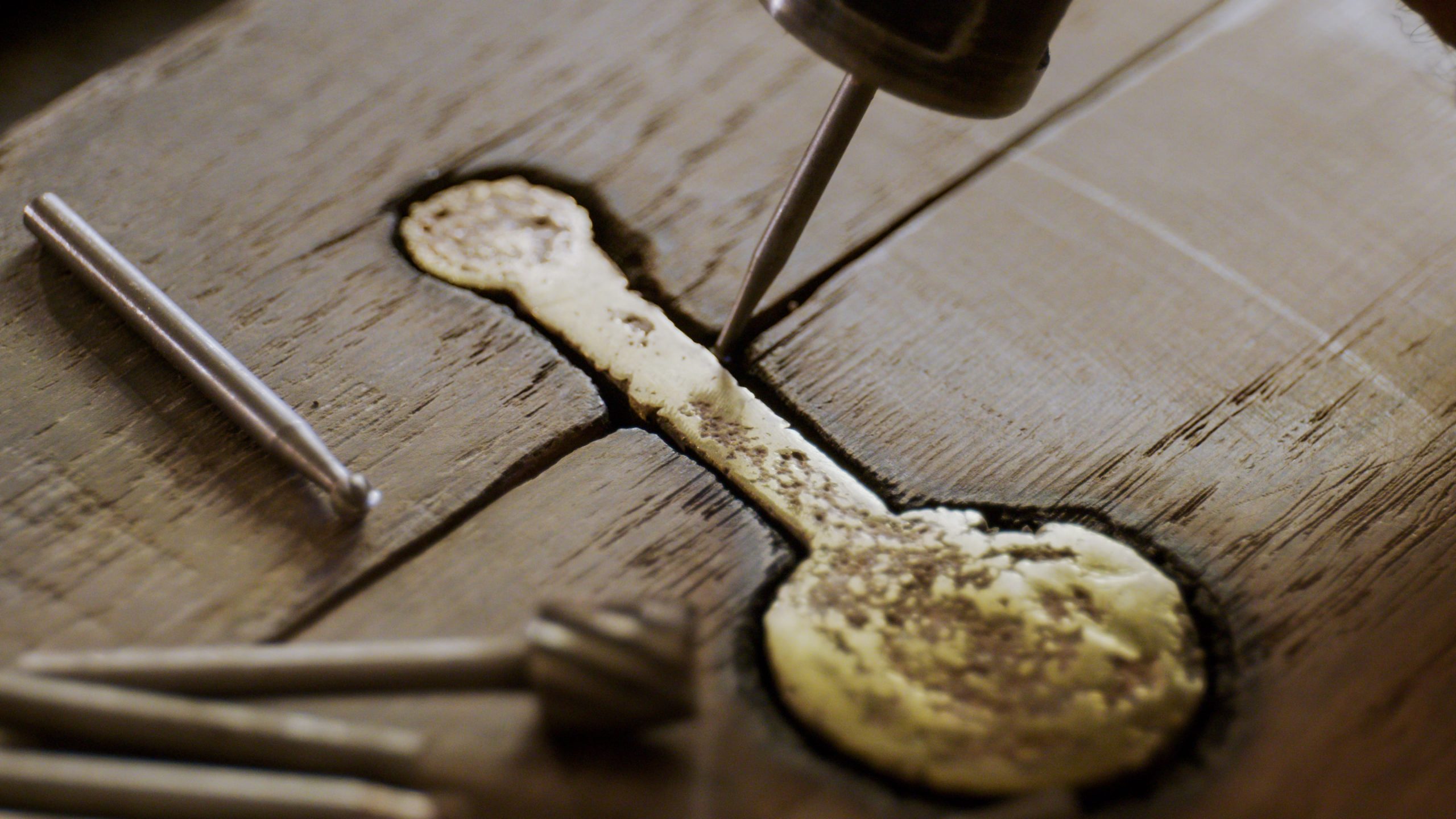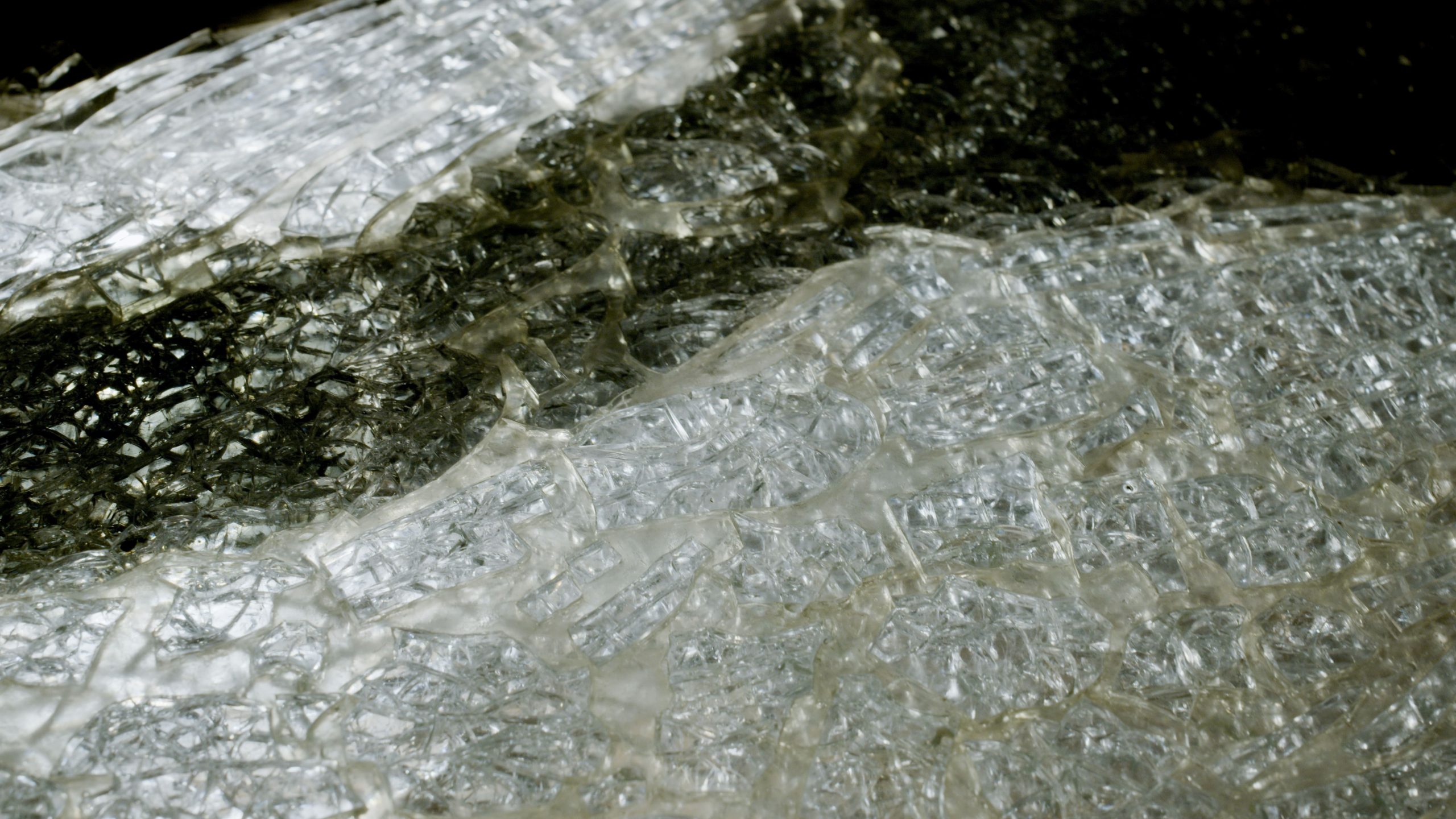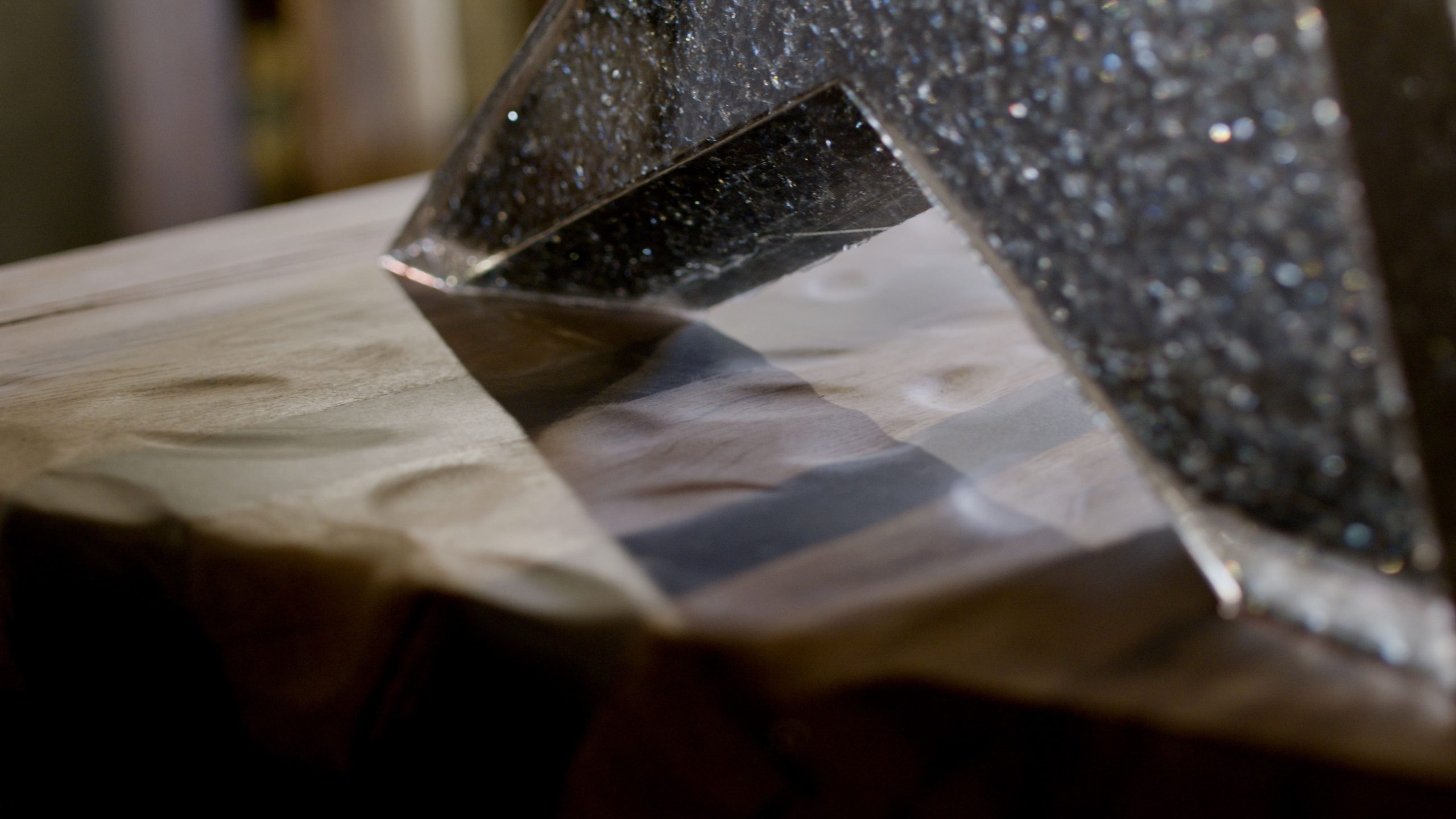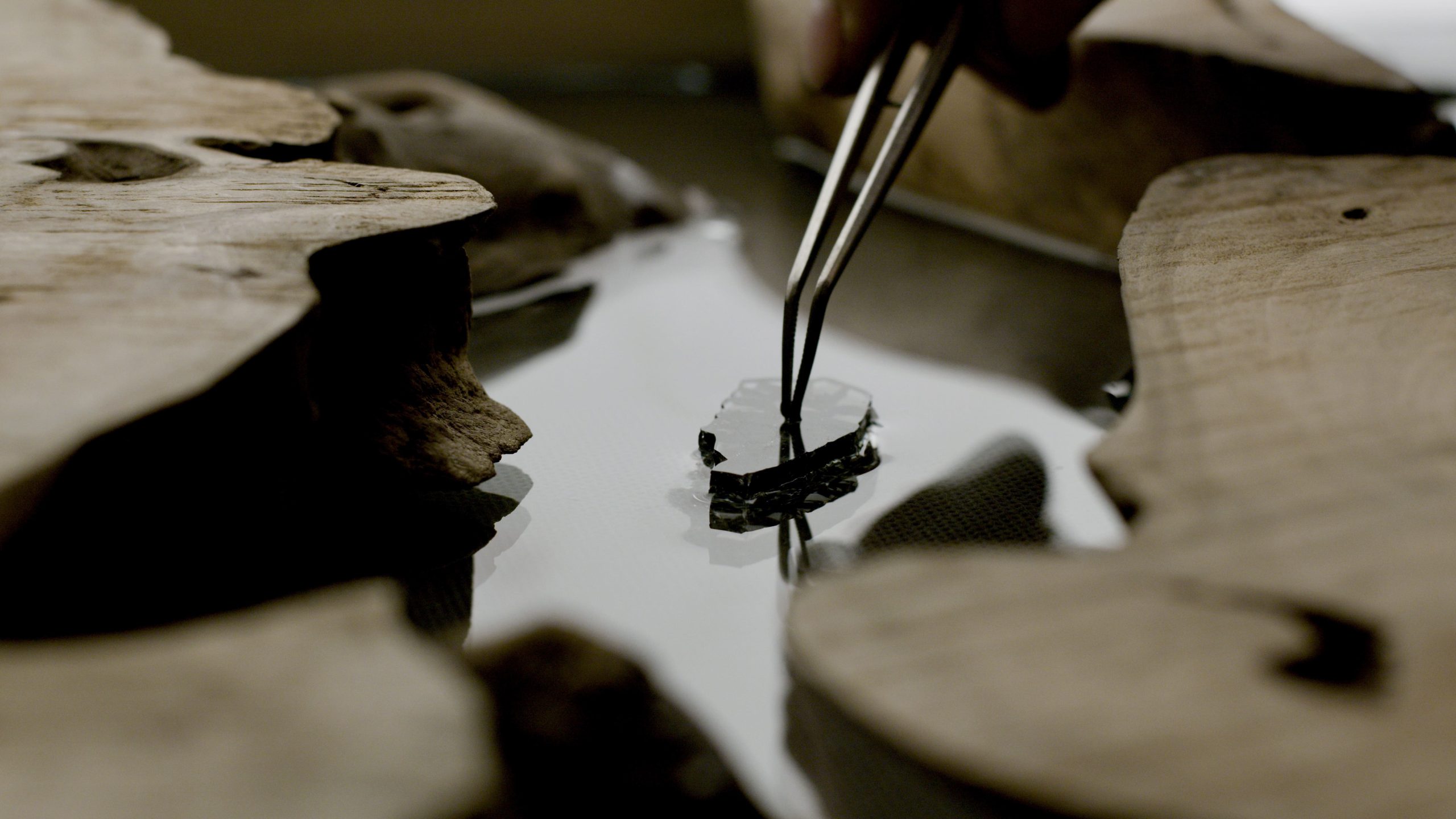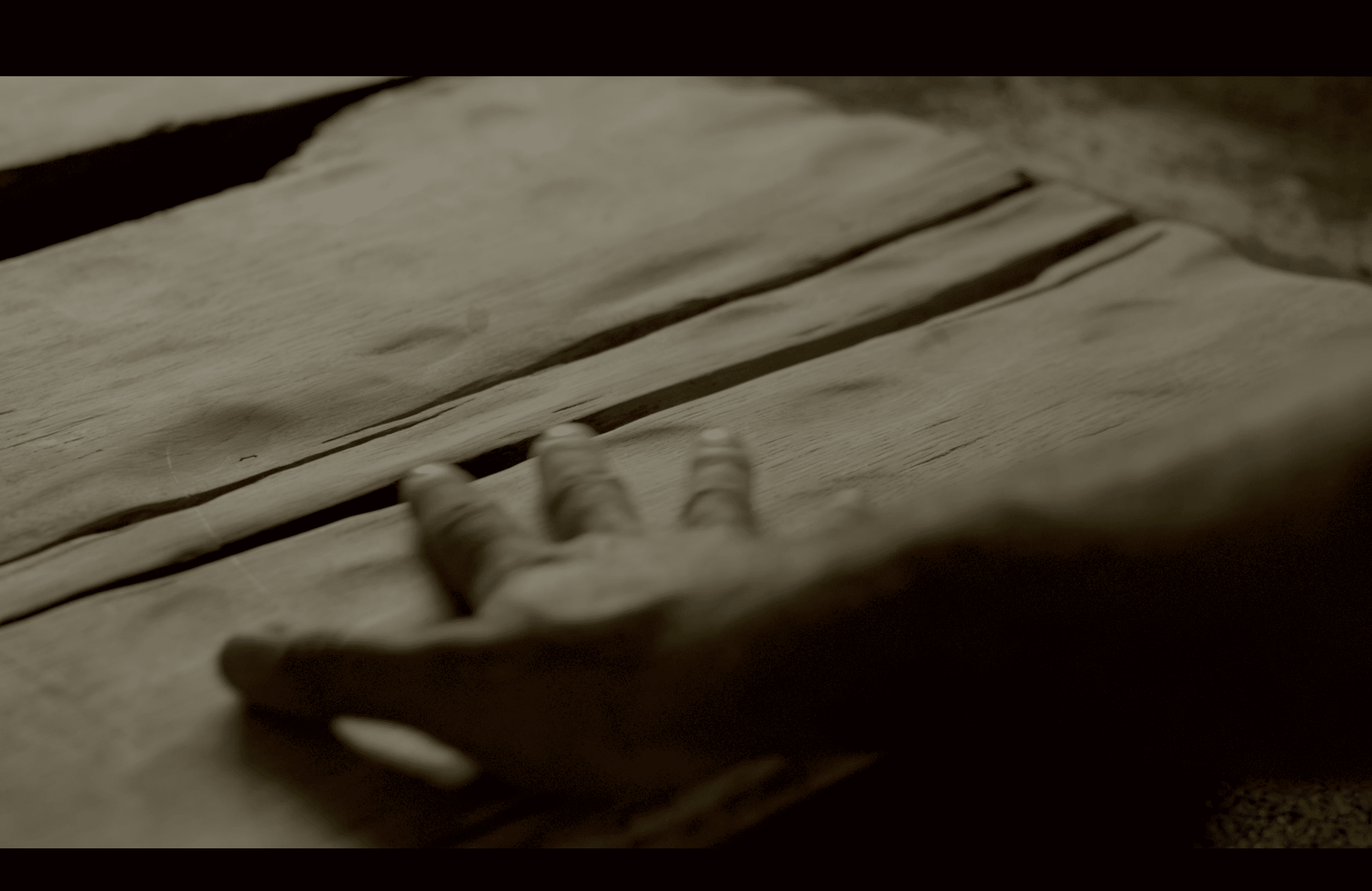I grew up in a house with a tailoring workshop, so from an early age, I sewed rag dolls and observed the masterfully crafted seams as key joints that brought fabric to life. Then, I stepped into the yard, where there was a workshop filled with metal and tools for shaping it…
For the past ten years, I have spent time in the workshop, contemplating my own approach to design—applying old techniques, combining them with new ones and fresh ideas. At some point, I returned to those seams, but this time, they were meant to join the “torn” parts of wood…

Redesigning the Traditional Butterfly Joint
The process of joining cracks in wooden surfaces opened up a completely new perspective on this once-essential element.
The butterfly joint, historically used to bind cracks in wooden panels, has retained its aesthetic and structural function to this day, despite modern techniques and materials. The thought that struck me and defined this small transformation in the traditional butterfly joint is simple and goes like this: “I need to know where the ‘roots’ are and clearly emphasize what holds what together!”
Thus, I created this butterfly joint as two connected circles of different sizes, where I attached the larger circle to the base (the roots) and the smaller one to the panel that tends to separate. The very points of pouring are retained as the root, which, by penetrating deeper into the panel, sometimes remain hidden and sometimes pass through to the lower surface, depending on the pouring technique. This approach achieves additional macro-retention, ensuring that the “rooted” butterfly joint is a secure method of stabilizing and “stitching” cracks.
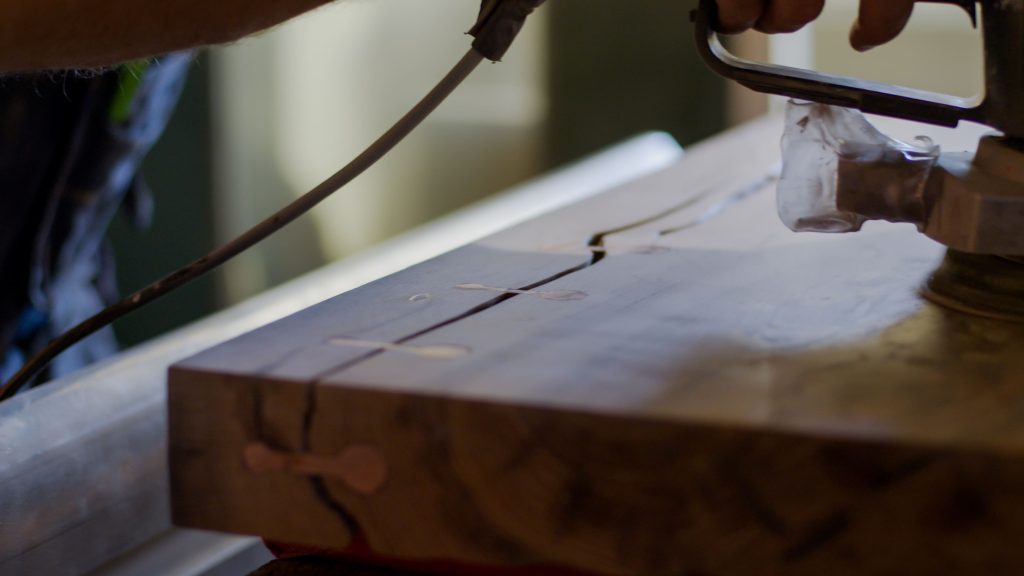
Technique
I use two techniques—one aggressive and the other meditative. The aggressive technique involves direct pouring, leaving a clear boundary between the molten metal and the wood’s walls. The second technique is completely opposite: a long and meditative process that involves crafting a wax model, creating a shell mold, and then precisely shaping and embedding the inlay.
Regardless of the method used, both are the result of prolonged contemplation, meticulous craftsmanship, and a few burns along the way. In the end, the butterfly joint is more than just a functional element—it becomes a metaphor for connection, resilience, and balance. Just as stitches hold fabric together and welds bind metal, this redesigned joint represents the delicate yet strong ties between elements, materials, and even ideas. It reminds us that even in breakage, there is beauty, and that sometimes, it is the way we mend things that truly defines their value.
Thank you for reading,
Nemanja Lakić

